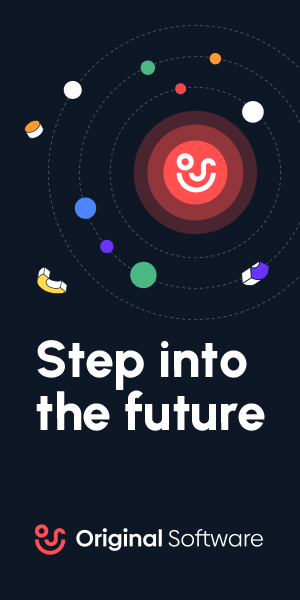As organizations invest in ERP upgrades, such as the move to SAP S/4HANA or Infor CloudSuite, the need for improved workflows and streamlined processes has become more apparent than ever before. This is especially impactful when it comes to software testing.
With new upgrades and implementations arriving more frequently than before, the enterprise software landscape is constantly in flux. This means businesses face new challenges in ensuring the quality and stability of their increasingly complex application ecosystems.
In an exclusive interview, Colin Armitage, CEO of Original Software, provided invaluable insights into the critical world of end-to-end testing, helping companies understand how they can mitigate risk and meet their quality goals. With a history stretching back to 1997, Original Software has been a consistent presence in a space often characterized by fleeting trends, offering a unique perspective shaped by decades of experience.
Making Testing Straightforward and Accessible
One of the key differentiators of Original Software is its roots in low-code and no code capabilities. Armitage explained that the decision to avoid a code-based testing solution was fundamental from the company’s inception, as it was fundamental to problem-solving.
“If you are trying to test a code base as it is, why on earth would you want to build another code base to test the first one? The testing code would be just as likely to have bugs in it as the code being tested. You would need specialized skills to build it, and you haven’t made the problem easier. You’ve made it harder,” said Armitage.
Beyond simply eliminating code, this approach tackles other inherent challenges in traditional test automation, such as managing timing dependencies. The common practice of embedding fixed-duration wait loops in test scripts highlights their inflexibility and potential for failure if application response times vary. Original Software’s solution intelligently handles timing, recognizing when the application is ready for the next action.
Adapting to the new Enterprise Software Landscape
Original Software’s core business revolves around helping organizations achieve their quality goals while man aging and reducing risk. This is particularly crucial during major upgrades and the implementation of new applications, ensuring a “risk informed state of play” when companies go live.
This is especially important in the modern technology landscape. ERP vendors are increasing the rate of updates, and companies cannot test the software the same way they have done in the past.
“Recently, a lot of ERP vendors have moved to monthly updates. What you could do to test something if it was only once a year was fine. If you have to test every month, you can’t go and rip 20 or 30 of the key business users out of the business every month for two weeks. It is just physically impossible. So, it tends to be at that more operational level there where they’ve reached a point where they just can’t continue testing the way they have been doing it,” said Armitage.
Armitage added that the ability to test business processes seamlessly across multiple applications becomes not just advantageous but “essential.” Original Software’s platform rises to this challenge by supporting a wide array of applications, from modern browser-based ones to desktop applications and even legacy IBM emulators, recognizing their continued importance in some business processes.
This is particularly important for companies that are now managing multiple ERP systems due to acquisitions. The ability to support these diverse environments is crucial for their companies navigating consolidation efforts.
“We may run into somebody who says, ‘we’re an SAP shop,’ but they’ll be using Salesforce as a CRM rather than SAP or they will be using something else for their e-commerce. For an end-to-end business process, you’ll typically be visiting multiple applications. So, it’s not a nice idea to support multiple applications. It’s essential,” said Armitage. “And it is that end-to-end testing, the ability to test the process across applications, that is essential. You don’t want to see application boundaries. You just want to be able to test the business process. It’s very much a strength of ours, going across applications.”
Understanding Challenges and Evolving to Meet Them
With nearly 30 years of experience in the testing space, Original Software understands where technologies like automation can be helpful and where business process overhauls are more likely to yield the desired results.
When looking to improve their testing workflows Armitage says companies should start off by taking a step back and evaluating their business pain points. For instance, companies often request test automation as their first order of business. Yet taking the time to review their current practices may reveal that the real issue isn’t a lack of automation but the disruptive impact of user acceptance testing (UAT), where key users are taken away from their regular duties.
“Companies can argue that maybe they could automate their testing, but that’s difficult if there’s new features. There’s always going to be an element of manual testing done on that. But more importantly, that familiarization with either changes or new features has to be done by the users, and that, again, has an impact on the business,” said Armitage.
While automating UAT might seem like a solution, it’s challenging with new features, and the crucial familiarization aspect for users will always require manual input, impacting business operations. Therefore, enhancing the efficiency of this process can be a significant win for companies.
Armitage cautioned against the expectation of automating everything, as it “doesn’t make any sense” for processes which run infrequently. Instead, he advocated prioritizing the automation of core processes that would cripple the business if they failed. He used the analogy of building a “survival pack” of automated tests for critical processes like order-to-cash or procure-to-pay, al lowing companies to quickly verify their core functionality after a new release.
Recognizing that some companies, especially in test automation, might need extra support, Original Software also offers a “fast start service” involving remote embedding of its personnel to help build initial test assets quickly. However, the bedrock of the company’s offering remains its comprehensive software platform.
Incorporating AI into Testing
Original Software has long been ahead of the curve on AI, incorporating it in a practical sense to solve fundamental testing challenges. Armitage illustrated this with the example of identifying UI elements, explaining how their AI can understand what a user would intuitively call an element (e.g., the “User” text box) rather than relying on technical HTML identifiers that are meaning less to a business user.
This focus on user-friendliness and readability is crucial for making test scripts accessible to a wider audience. While promising further developments in AI for its offerings, Armitage emphasized a realistic approach, learning from the initial over-promising often associated with new technologies. This allows Original Software clients like Costco to have an accurate expectation that it is refining what it already does well, rather than doing anything radically different.
“Costco uses part of our platform. It takes them three days to run the extraction because their live database is so big. They were delighted when we managed to shave around 20% off their time. That’s a big win, because they can get back to their day jobs earlier on and do more testing with the available time,” said Armitage.
Building a Business Case
While many IT experts will understand the importance of sophisticated testing capabilities, the reality is that they also need to build a business case that emphasizes the importance of testing to business leaders. However, this can be difficult, particularly when the primary benefit is avoiding potential catastrophes rather than generating direct revenue.
Armitage acknowledged that the “tipping point” for investment varies among customers. Companies that have experienced significant negative impacts from software failures often find the justification straightforward.
However, for others, the impetus might come from middle management facing increasing pressure due to inadequate testing coverage or the rising frequency of software updates.
The shift towards monthly updates by vendors like Infor, compared to the less frequent updates of on-premise systems like SAP ECC or Oracle EBS, makes traditional manual testing approaches increasingly unsustainable.
Armitage emphasized the need to present a compelling case to senior management, which Original Software assists customers in doing. Highlighting real-life examples of companies narrowly avoiding major issues can be a powerful tool.
Adapting to the New Normal
Companies often struggle to adapt to the rate of change in the new technological landscape. Armitage said that the move to the cloud has changed the rules in terms of vendor relationships and it also means that businesses are not in control of how often they need to run tests on their software.
Finding a partner like Original Software in this new environment is essential. It can help companies not only understand the technology landscape as it now exists but allow them to adapt to it. With new software deployments and upgrades constantly being rolled out, businesses need to have confidence that their investments are being protected from risk and can deliver the value they need to reach their business goals.






